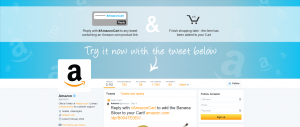 Its a fundamental human desire to want to be part of a group. People seek camaraderie and a sense of belonging. Some brands are marketed in such a way that people want to be part of the group of consumers who buy that brand. For example, do you want to be in the Mac social group or the PC social group? Are you a Pepsi group member or a Coke group member?
Its a fundamental human desire to want to be part of a group. People seek camaraderie and a sense of belonging. Some brands are marketed in such a way that people want to be part of the group of consumers who buy that brand. For example, do you want to be in the Mac social group or the PC social group? Are you a Pepsi group member or a Coke group member?
People want to connect with other people, not companies or brands. That’s why brands that are successful at becoming relationship brands (like Apple) have a loyal and vocal band of brand advocates cheering them on. It’s not because the relationship brand is so important to them but rather, it’s because of the relationship those people feel like they have with the other people who buy and use the brand.
The social web has enabled people to come together in groups to share branded experiences and conversations in a way that brands couldn’t even dream of 10 or 20 years ago. The trick for brand managers is to shift from marketing their brands at consumers to marketing brands with consumers where consumers feel like they can choose whether or not the social group that uses the brand is the right group for them to join.
Think of it this way — when consumers decide to follow a brand’s Facebook page, they’re considering two primary factors in the decision-making process: what’s in it for me if I follow this brand’s Facebook page (i.e., discounts, exclusive information, and so on) and do I want all of my Facebook friends to see that I’m part of the group of people who follows this brand’s Facebook page?
Now, consider a couple of powerful relationship brands that already have large social groups of consumers supporting them. For example, it’s fairly safe to assume that a loyal Harley Davidson customer would be proud to follow the Harley Davidson Facebook page. In fact, Harley Davidson customers who use Facebook would probably feel left out if they didn’t follow the Harley Davidson Facebook page.
Therefore, you need to get creative and start thinking of how you can create a perceived us against them mentality that positions your brand against the competition through the lens of social groups. Make sure consumers understand what your group offers and means to them, and then let them decide if they want to join the group or not.
Image: bradleygee
Susan Gunelius is the author of 10 marketing, social media, branding, copywriting, and technology books, and she is President & CEO of KeySplash Creative, Inc., a marketing communications company. She also owns Women on Business, an award-wining blog for business women. She is a featured columnist for Entrepreneur.com and Forbes.com, and her marketing-related articles have appeared on websites such as MSNBC.com, BusinessWeek.com, TodayShow.com, and more.
She has over 20 years of experience in the marketing field having spent the first decade of her career directing marketing programs for some of the largest companies in the world, including divisions of AT&T and HSBC. Today, her clients include large and small companies around the world and household brands like Citigroup, Cox Communications, Intuit, and more. Susan is frequently interviewed about marketing and branding by television, radio, print, and online media organizations, and she speaks about these topics at events around the world. You can connect with her on Twitter, Facebook, LinkedIn, or Google+.


